(December 9, 2022) Growing up, The Jetsons was one of my favourite cartoons. I was fascinated by the futurist gadgets on the show – especially their flying cars. And quite recently, I had an opportunity to interact with a scientist who is actually working on the concept of a ‘flying vehicle’ that can be used by individuals for their daily commute, easing road transportation across the globe. Dr. Kaushik Rajashekara, one of the world’s leading experts in the field of transport technologies, is working on several futuristic projects that hold the potential to change the world and the way we travel. The recipient of the Global Energy Prize 2022 – the highest award in the field of energy – Dr. Rajashekara was one of the first engineers to work on conceptualising and also building an electronic vehicle, far before the technology became widely known.
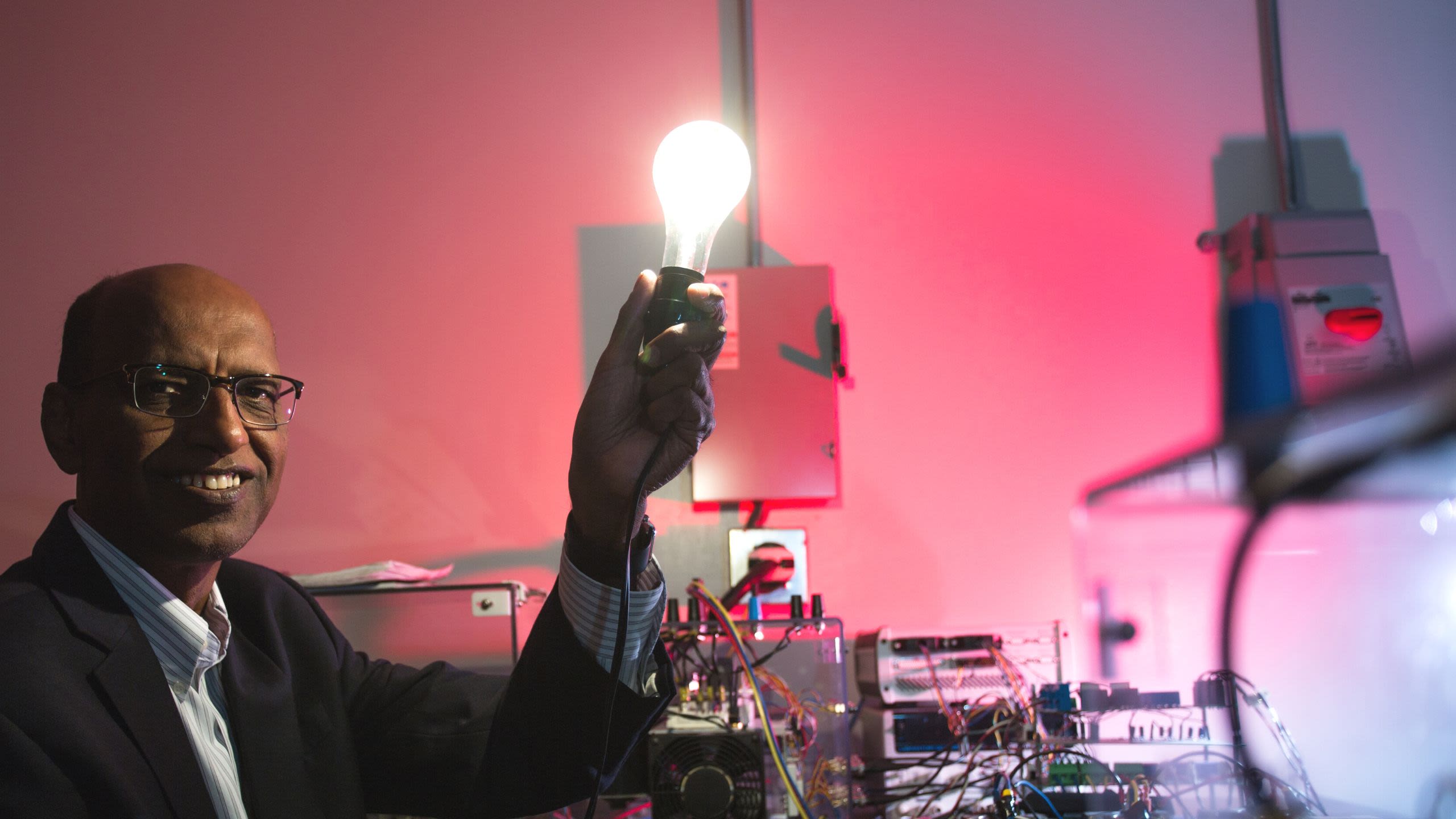
Dr. Kaushik Rajashekara, winner of the Global Energy Prize 2022
“When I received the e-mail about my selection, I could not believe it for a moment. This award shows the importance of energy efficiency improvement and reducing emissions. I am proud of the contributions I have made to technologies that would improve the environment. Also, I have travelled to about 60 countries giving seminars on various topics at universities and conferences. It is humbling to recognise how many people contributed to my success, expecting nothing in return. ‘It takes a village’ is very true in my case, and I am fortunate that my village included some of the most encouraging and inspiring engineers in the field,” he shares with Global Indian.
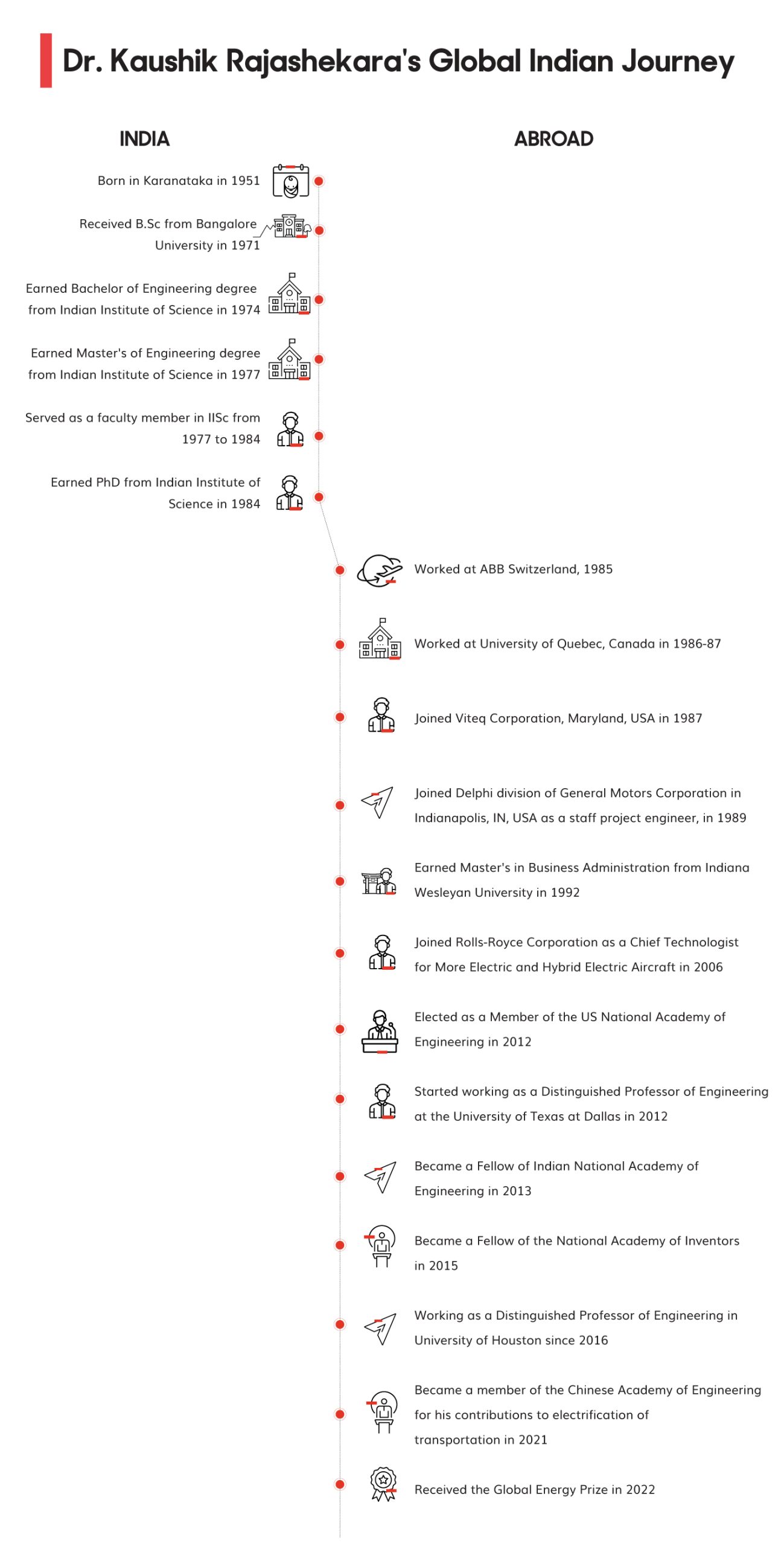
Currently a Distinguished Professor of Engineering at the University of Houston, Dr Rajashekara wishes to pass on all the knowledge he has gained in the last three decades to new-age engineers to ensure that the evolution of science and technology never stops. “After 35 years of working in the world’s well-known Corporations, including ABB, GM, and Roll-Royce, I am very happy to be in the academic field. I am making use of every opportunity to educate and train the next generation of engineers. In a way, I worked all my life to be a professor and train others even when I was in the working industry,” the scholar says.
A humble start
Born in a small village called Devarayasamudram in Karnataka, Dr. Rajashekara was a very bright student. Talking about his early life, the scholar says that while his parents were not very well-educated, they always encouraged him and his siblings to excel at school. “I think childhood is a fascinating time. My mother took care of us in the village as my father had to work in a town about 100-km away. He visited us about once a month. I had two elder brothers – one became a civil engineer and the other a medical doctor, both of whom are retired now. My parents did not have any formal education. My father could read and write a little Kannada, and my amma couldn’t read either. But they valued education and wanted us siblings to do good well in life,” shares the scholar.
After finishing his 10th standard from a Kannada-medium school, Dr. Rajashekara moved to Bangalore (now Bengaluru) for further education. “It was quite a difficult time. I didn’t know a word of technical English, and the Bengaluru college was an English medium. While growing up in the village, I learned five languages – Kannada, Telugu, Hindi, Sanskrit, and English. In my professional career, I attempted to learn German, French, Spanish, Chinese, and Japanese. Now I can still manage German, but not the other four,” laughs the scholar.
Passionate about learning more regarding the developments in the technology field, Dr. Rajashekara pursued a bachelor’s degree in Engineering from Indian Institute of Science in 1971 and graduated in 1974. He soon started working at Cutler-Hammer and then Debikay Electronics, entering the field of power electronics. “I worked on thyristor drives for paper and rolling mills and learned that a solid foundation in the basic elements of engineering is a requisite for real-world practical systems,” he says.

However, just one year later, his pursuit of knowledge brought him back to academics. “Even though I had finished my undergraduate degree, when I got a chance to do the graduate course in electrical engineering from the Indian Institute of Science, I couldn’t turn it down.” The scholar went on to earn a master’s and later a Ph.D. in electrical engineering from IISc, during which time he also served as the Senior Scientific Officer/Asst. Professor at the institution. “I worked under the supervision of Prof. Vithayathil. He was the first to start a power electronics research programme in India, and his guidance strengthened my skills in power electronics,” the scholar reminisces.
The world of machines
Working as a faculty member at IISc, which is one of the leading scientific institutions in the country, opened several doors for the scholar throughout his career. He shares, “While at the institution, I got the opportunity to work for two years at ABB with Dr. Stemmler, who became my role model. Later, I met Mr. Schoenholzer of Neu Technikum Buchs, Switzerland, who taught me how to design and build inverters. I can only tell you how thrilling it was to witness a three-phase 6-kVA thyristor inverter working when I turned it on for the first time.”
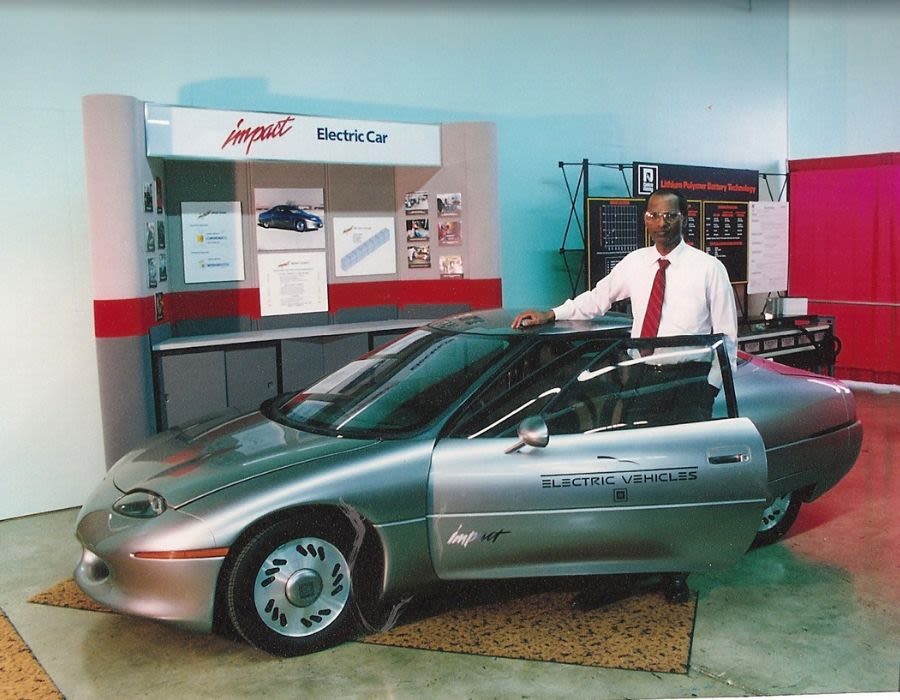
Dr, Rajashekara with GM Impact electric vehicle in 1993
In 1986, the scholar moved to Canada after the insistence of his friend Prof. Rajagopalan and joined the University of Quebec. After working there for a year, Dr. Rajashekara went to the United States of America to work for Viteq Corporation. During the same time, he became a member of the IEEE and the IEEE Industry Applications Society (IAS). “I worked with Viteq for close to three years, where I learned a lot from my bosses. In 1989, I joined the Delco Remy division of General Motors (GM) and started working on the electric vehicle (EV) programme. I believe this about two decades before the public even got to know what electronic vehicles were. Right now electric vehicles make up only about three percent of car sales worldwide. But, we project that number will top 50 percent by 2035. The future looks bright,” he smiles.
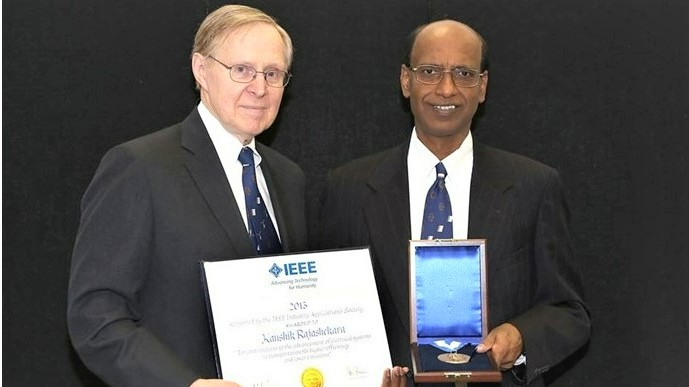
Dr. Kaushik Rajashekara receiving the prestigious IEEE Kaugmann award from IEEE President, 2013
“It was quite an exciting time. The technology we worked on led to the commercial version of EVs called the GM EV1. This experience formed the foundation for my future contributions in transportation electrification, for which I later received several awards, including being elected to the National Academy of Engineering in 2012,” the scholar adds.
Building an exciting future
His tenure at GM not only helped him strengthen his research work but also provided him an opportunity to work on the energy programmes with several other countries. Dr. Rajashekara joined Rolls-Royce Corporation in 2006, where he became involved with yet another exciting technological project. “I worked on more electric aircraft (MEA) projects. This next-generation technology truly fascinated me. The MEA concept helps with aircraft performance, decreasing operating costs, increasing dispatch reliability, and reducing gas emissions. MEAs quickly became the new focus of my career and also led to my interest in working on flying cars, combining the technologies of automotive, aircraft systems, and power conversion systems. Something I am still working on,” he informs.
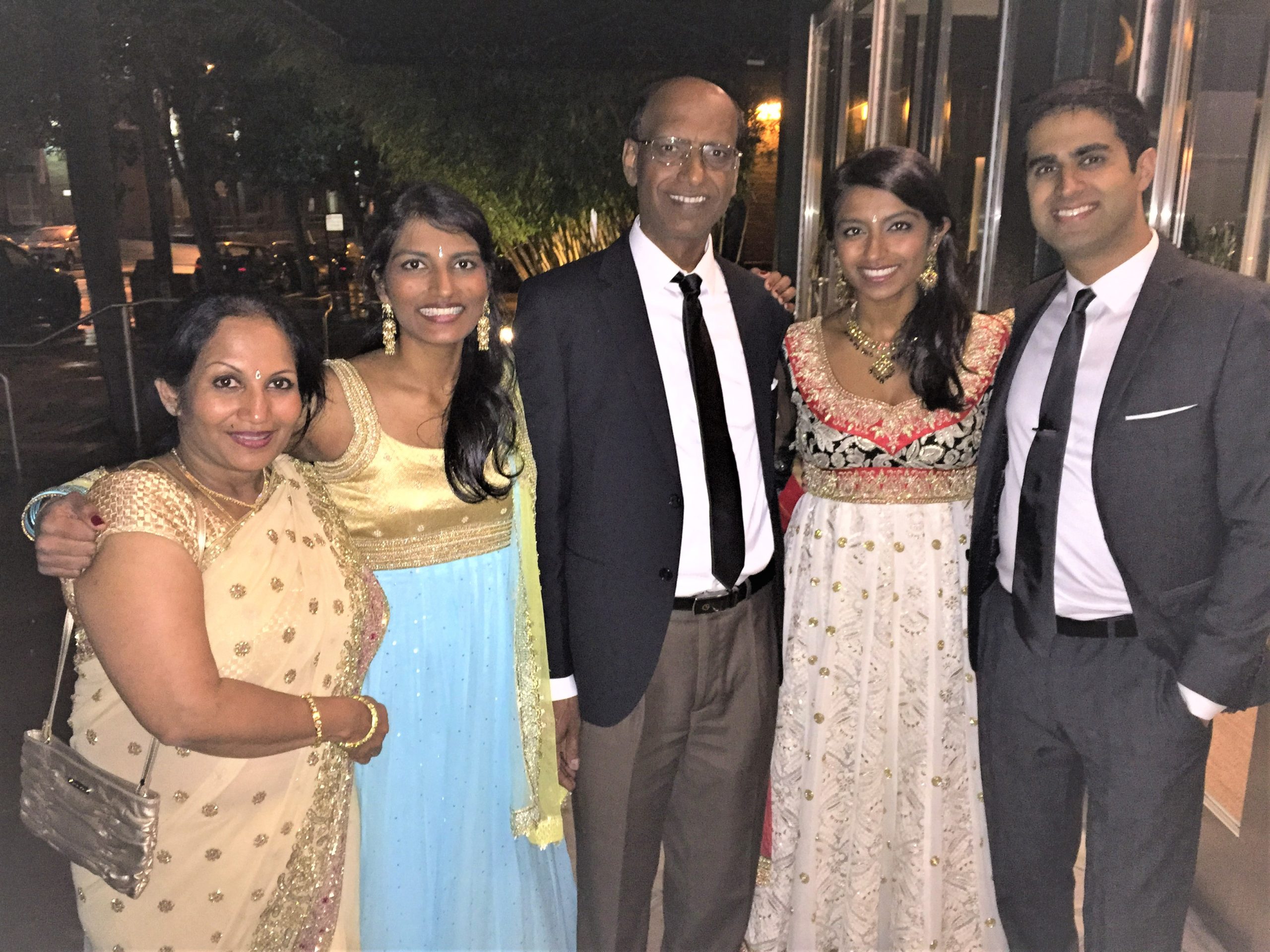
Dr. Kaushik Rajashekara with his family
Excited about the future of the transportation industry, the scholar finds tremendous promise in this next frontier. He says, “EVs have been around for about 100 years now, and the improvement in technology is making it possible for people to use these vehicles. I see flying cars and Vertical Take-off and Landing (VTOL) aircraft taking the same track of steady progress. They might first be introduced as air taxis. For example, you will be able to walk to the nearest launch center to take a flying taxi to the airport and skip the city traffic to reach there faster. There are numerous opportunities in this arena, people just need to explore them.”
Even though he was climbing up the corporate ladder at big technology companies, one dream that never left him was that of becoming a teacher. And thus, following that path, Dr. Kaushik Rajashekara first joined the University of Texas at Dallas and is now working with the University of Houston since 2016. “Even as a child I always wanted to become a teacher, and I was good at it too. While I like researching and working on new technology, I really enjoy helping students or colleagues find success in their lives or their professions. I came from a small village in India and grew up in a house that was smaller than my current office, living there with my mother and two brothers. In addition to leaving behind a better world, I would like to help those around me realise how far they can go if they deploy a tremendous resolve to accomplish their goals,” says the scholar.
- Follow Dr. Kaushik Rajashekara on LinkedIn





Fascinating career of Prof. Dr. Rajashekara, a good friend and am happy and proud to have been associated with a world Renowned Expert in Power Electronics and it’s application to Electric transportation systems
Fascinating career indeed. I am delighted to know about his studies, research and career, especially about his various contributions to transportation sector. He’s such a humble person; I never knew about his accomplishments till today, even though I have known him since early 90s in Washington. Best wishes to him and his family. Special greetings to his wife Vani.
It’s a great summary of my uncle’s career I will save this article as inspiration for my kids